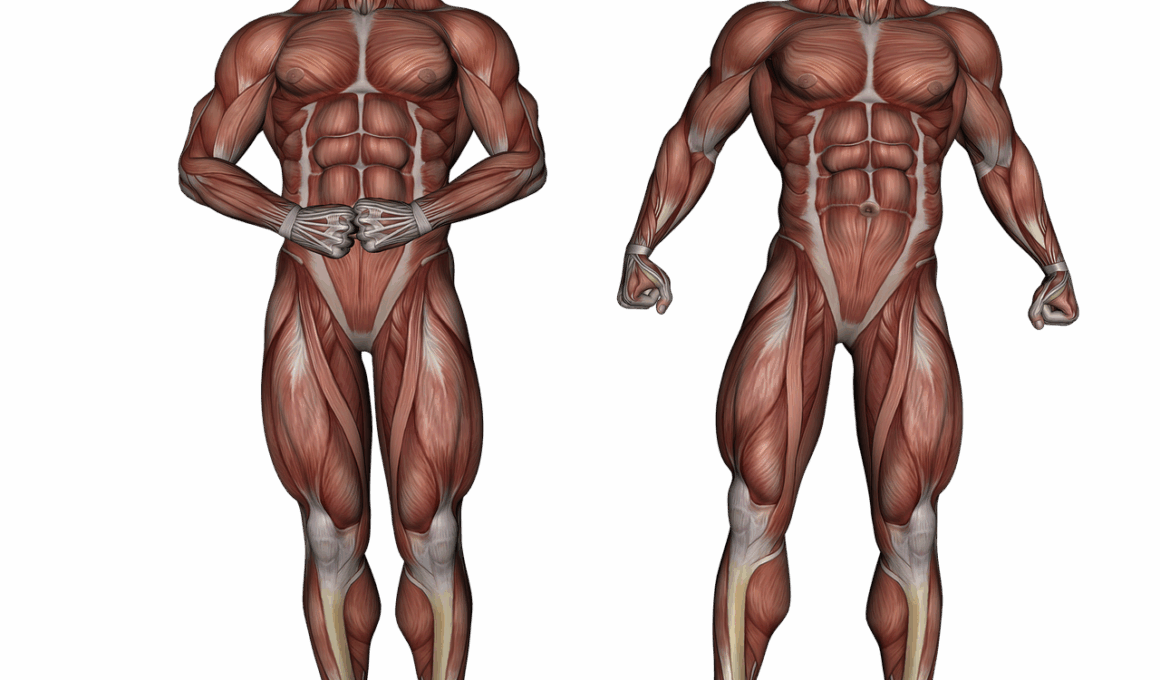Use of Near-Infrared Spectroscopy in Muscle Metabolism Research
The exploration of muscle metabolism through advanced technological methods has profoundly impacted exercise physiology research. In recent years, Near-Infrared Spectroscopy (NIRS) has emerged as a revolutionary tool for assessing muscle oxygenation and metabolic characteristics during physical activity. This non-invasive technique enables researchers to obtain real-time data regarding muscle oxygen consumption and blood flow, essential components in understanding muscle performance and fatigue. NIRS works by using infrared light to penetrate tissues, measuring how much light is absorbed by oxygenated and deoxygenated hemoglobin within the muscle. The information derived from NIRS can assist in determining the efficiency of oxygen utilization by muscles while performing various exercises. By comprehensively evaluating muscle oxygenation levels, researchers can identify the differences in performance capabilities among individuals, making it a valuable asset in both clinical and sports science settings. Ultimately, the application of NIRS promotes a deeper understanding of the physiological adaptations to exercise, offering insights that could enhance training and rehabilitation methods for both athletes and patients alike.
Furthermore, Near-Infrared Spectroscopy has significant advantages when conducting muscle metabolism studies. It is particularly appreciated for its portability and ease of use, allowing for assessments during dynamic movements and exercise tasks. Unlike traditional methods such as venous blood sampling or muscle biopsies, NIRS eliminates invasive measures that can be uncomfortable or impractical for subjects. The ability to track changes in oxygen saturation continuously during exercise provides a more comprehensive view of muscle response to physical stress. Additionally, as exercise modalities vary, NIRS has shown adaptability across different types of physical activities, from endurance sports like running to strength training sessions. Researchers are increasingly utilizing NIRS to evaluate training regimens, assess recovery strategies, and monitor the progression of rehabilitation programs. This tool is pivotal in understanding how various training loads affect muscle metabolism and overall athletic performance. The continuous advancement and refinement of NIRS technology contribute to its growing presence in exercise physiology research, unlocking new possibilities for investigating the intricate relationships between exercise, muscle function, and metabolic health.
To better grasp how NIRS functions, it is essential to understand its fundamental principles. The NIRS technology mainly focuses on the spectral properties of hemoglobin present in blood. It utilizes specific wavelengths of light in the near-infrared range, where light can penetrate biological tissues effectively. The absorption characteristics of oxyhemoglobin versus deoxyhemoglobin are distinct. By measuring the light absorption levels, NIRS can quantitatively assess the ratios of these two forms of hemoglobin, indicating the muscle’s oxygenation status. Consequently, real-time data acquisition aligns with metabolic demands and exercise intensity, leading researchers to conclude vital information about the physiological conditions during physical exertion. This aspect is particularly beneficial for analyzing muscle performance in various populations, including those with specific health conditions or athletes immersed in intense training protocols. Moreover, the technology also helps identify potential fatigue thresholds and guide performance optimization strategies. Through these analyses, NIRS facilitates a more targeted and individualized approach to training and rehabilitation in athletes and patients alike.
Applications in Research
Beyond its technical merits, the application of NIRS within different research contexts emphasizes its versatility and importance. In clinical environments, for example, evaluating muscle oxygen levels can inform therapeutic protocols for individuals recovering from surgery or chronic diseases. Tracking the effectiveness of rehabilitation programs becomes easier when real-time physiological data is accessible. Likewise, researchers utilize NIRS in elite sports to uncover performance trends among athletes. Understanding the timing and extent of oxygen consumption can enhance training regimens tailored to optimize performance and decrease injury risk. Moreover, studies employing NIRS can explore the effects of various stimuli on muscle metabolism, such as changes in exercise duration, intensity, and recovery intervals. NIRS serves as a significant asset in designing innovative training protocols based on objective data. Additionally, using this technology in conjunction with other methods enhances the reliability and accuracy of findings related to muscle metabolism, ultimately leading to more effective strategies for improving physical fitness and performance across diverse populations.
Furthermore, the integration of NIRS technology into academic research programs has increased exponentially. With the growing interest in muscle metabolism, researchers are developing studies focused on understanding the mechanisms behind athletic performance and physical capabilities. Employing NIRS allows for an in-depth examination of how muscles respond under various exercise conditions, granting essential insights into individual variability. This understanding can lead to advancements in tailored training approaches that can unlock an athlete’s potential. Additionally, the incorporation of NIRS data into academic curricula establishes a stronger foundation for future researchers, ensuring they are well-equipped to utilize these cutting-edge techniques in their investigative efforts. As research continues to evolve, NIRS stands at the forefront of exercise physiology and sports science, expanding the horizon for innovative study designs and methodologies. The prospective implications of these studies could revolutionize training modalities, promoting an era of personalized exercise regimens supported by empirical evidence gleaned through advanced assessment techniques like NIRS.
One of the significant obstacles within the domain of NIRS and muscle metabolism research involves the need for standardized methodologies. As various studies adopt different protocols, it becomes increasingly challenging to compare results across populations and contexts. Establishing consistent guidelines for data collection, analysis, and interpretation will ultimately facilitate meaningful collaboration among researchers and yield more holistic insights into muscle metabolism. Additionally, engaging with interdisciplinary teams can enhance the robustness of research outcomes, contributing to a deeper understanding of the biological pathways involved in muscle function. Collaboration between exercise physiologists, medical professionals, and technology experts could accelerate advancements. It is essential to continue the dialogue around the utilization of NIRS to drive improvements in research quality, fostering an integrated approach to understanding muscle metabolism comprehensively. By addressing these challenges, researchers can pool their expertise and resources, leading to more significant innovations in exercise physiology and enhancing the implications of findings across different sectors.
In summary, the use of Near-Infrared Spectroscopy marks a transformative development in muscle metabolism research within exercise physiology. This non-invasive technique provides critical insights into oxygen consumption and blood flow during varying exercise intensities. As researchers explore novel applications for NIRS, its integration into clinical practice and sports science plays a pivotal role in improving training strategies and rehabilitation approaches for individuals across diverse backgrounds. The potential for real-time data collection fosters personalized training regimens, while ongoing improvements in the technology itself promise enhanced accuracy and reliability of the findings. While significant challenges remain, including the establishment of standardized practices, the future of NIRS appears bright. As interdisciplinary collaborations strengthen, NIRS technology will likely continue to evolve, leading to groundbreaking research capable of influencing health and physical fitness. Consequently, understanding the mechanisms underlying muscle metabolism through NIRS can catalyze advancements in both athletic performance and rehabilitation. Overall, the impact of NIRS on exercise physiology cannot be overstated, representing a vital tool in pushing the boundaries of human potential.
With the continuous advancements in technology and research methodologies, the future of muscle metabolism studies through Near-Infrared Spectroscopy looks promising. Future research endeavors will likely explore the applications of NIRS in various muscle groups, taking into account factors such as age, gender, and fitness level. By expanding the focus beyond the major muscle groups, scientists can gain a more comprehensive understanding of muscular responses across the body. Furthermore, the integration of machine learning and artificial intelligence within NIRS data analysis holds immense potential to enhance the precision of evaluations. Utilizing advanced statistical models to interpret results could simplify the extraction of relevant information, making the tool even more user-friendly for researchers. As the understanding improves, the practical implications of NIRS in tailoring fitness programs and medical interventions will also grow, allowing for optimized strategies to meet individual needs. This evolving landscape presents an exciting opportunity for researchers and practitioners to leverage NIRS technology further, striving for better outcomes in health and performance across diverse populations. Essentially, the journey with NIRS will only grow richer, holding promise for more innovative applications in the realm of exercise physiology.


